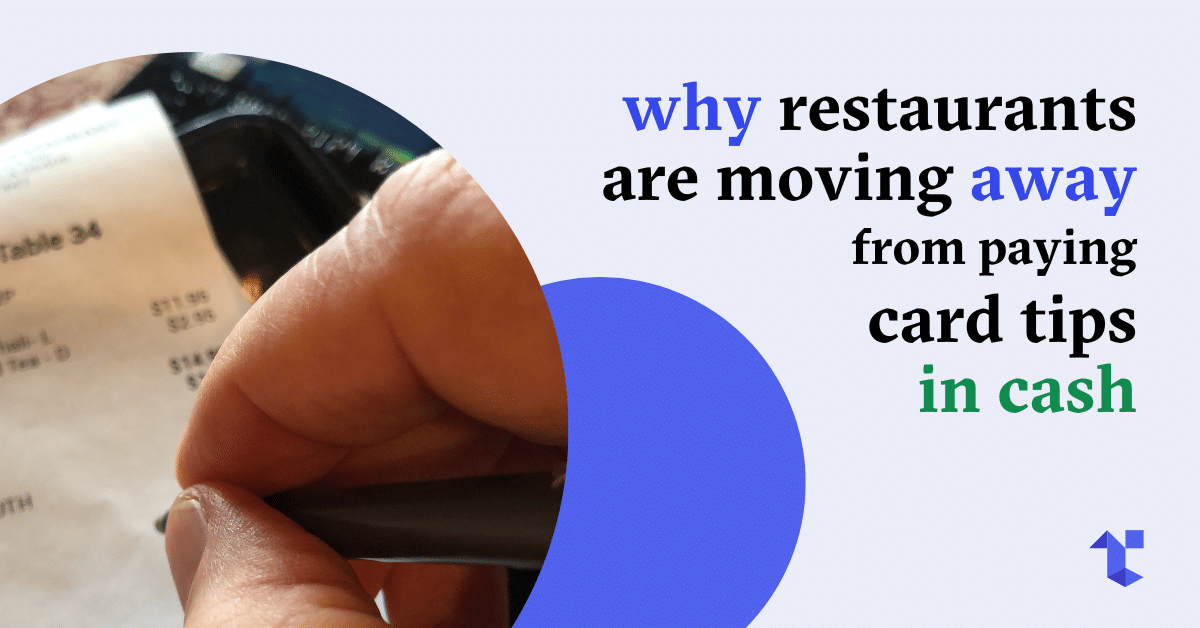Why Restaurants Are Moving Away from Paying Card Tips in Cash
April 16, 2024
The restaurant industry has faced unprecedented challenges due to the COVID-19 pandemic, witnessing a significant reduction in the workforce with over 110,000 establishments either closing temporarily or shuttering their doors permanently by the end of 2020. This drastic upheaval required those that remained operational to rapidly adapt to new operational protocols to accommodate health guidelines and changing consumer behaviors. Significantly, these adaptations were pronounced around financial transactions, specifically in the way customers traditionally tipped employees. With a shift towards contactless interactions, many restaurants began to accept only card payments, mitigating the risks associated with handling cash but also introducing a complex challenge—effectively managing and distributing tips made via credit and debit cards.
As the preference for tipping via credit or debit cards became more prevalent, restaurant managers found themselves navigating increased complexities in tip distribution. This modern tipping scenario requires meticulous bookkeeping and financial oversight to ensure tips are accurately allocated and paid out to employees. The intricacies of tracking digital tip transactions add a considerable administrative burden, heightening the risk of errors and inefficiencies within already stretched operational capacities.
This shift also affects how quickly service staff can receive their tips. Unlike immediate cash tips, credit and debit card tips are processed through payroll, potentially delaying payouts and causing financial strain for employees reliant on tips. Additionally, transaction fees from card companies may reduce the actual amount employees receive, complicating their financial situations further.
To tackle these challenges, restaurant managers are adopting advanced software and financial technologies that streamline digital tip processing and distribution. These tools automate administrative tasks and enhance accuracy by minimizing calculation errors. They also speed up the processing times, allowing staff to receive their tips quicker. By implementing these technologies, restaurants can ensure more transparent and fair tip distribution, boosting employee satisfaction and reducing turnover in this demanding industry.
By effectively integrating these technologies, restaurants can adeptly manage the complications of increased credit and debit card tipping. This allows fair compensation for employees while aligning with changing consumer behaviors and health guidelines post-pandemic. As this trend progresses, it is expected to drive further innovations and changes in restaurant payment systems, establishing new financial norms within the hospitality industry.
With the increasing preference for card payments, restaurant management faces the complex task of ensuring accurate tip distribution among employees. This necessity adds layers of complexity to financial operations, including detailed bookkeeping and precise payroll tax calculations. The shift towards digital tipping intensifies the need for meticulous financial tracking and management to prevent discrepancies and ensure transparency.
Reducing Administrative Burdens
As digital transactions become more common, the administrative responsibilities tied to managing and allocating tips accurately escalate. This complexity can lead to increased time spent on financial tasks, potentially diverting attention from other critical operational aspects of restaurant management. It also introduces challenges in maintaining accurate financial records essential for compliance and taxation purposes.
Minimizing Human Errors
Human error is a significant concern in manual processes, especially after long and exhausting shifts when managers are more prone to making mistakes in calculations. Misallocations of tips, whether due to incorrect entries or adjustments for staff changes, can lead to disputes and dissatisfaction among staff. Utilizing digital payment systems helps in capturing and recording transactions more accurately, reducing errors associated with manual handling and allocation of cash tips.
Addressing Cash Shortage Issues
The dominance of card payments not only impacts tip distribution but also creates challenges in managing cash flow. Many restaurants find themselves short on physical cash necessary to distribute tips promptly, leading to operational inefficiencies like multiple trips to the bank or ATMs. This can frustrate both management and staff, creating unnecessary tensions and disruptions within the daily workings of the restaurant.
Exploring New Solutions
To navigate these challenges, many restaurants are exploring new technological solutions. Integrated payroll services equipped with tip management features are becoming popular. These systems can automate the entire tip distribution process, scheduling regular disbursements via checks or direct deposits, thus eliminating the need for manual cash handling. Another innovative approach is the adoption of paycards. These allow tips to be loaded onto employee cards immediately after processing, giving staff instant access to their earnings either for direct purchases or cash withdrawals.
Further emphasizing the benefit of these digital solutions, they ensure that all transactions are recorded and easy to audit, increasing transparency and simplifying the end-of-month reconciliations. These technologies not only streamline operations but also improve security by reducing the amount of cash handled on-premises.
Continued Shift Towards Digitalization
As the trend towards digital transactions accelerates, traditional cash-based methods of tip handling are becoming increasingly outdated and inefficient. Forward-thinking restaurants are now proactively adopting these modern payment technologies. Such advancements are crucial, not only for improving the speed and accuracy of tip distribution but also for enhancing overall employee satisfaction and operational efficiency. These changes are reshaping the financial landscape of the hospitality industry, making it more aligned with contemporary business practices and consumer expectations.
share this blog
STAY CONNECTED
Sign up for our newsletter for the latest Tesseon information.
Related Blogs
What our clients are saying about us
Disclaimer: The information provided on this blog page is for general informational purposes only and should not be considered as legal advice. It is advisable to seek professional legal counsel before taking any action based on the content of this page. We do not guarantee the accuracy or completeness of the information provided, and we will not be liable for any losses or damages arising from its use. Any reliance on the information provided is solely at your own risk. Consult a qualified attorney for personalized legal advice.

